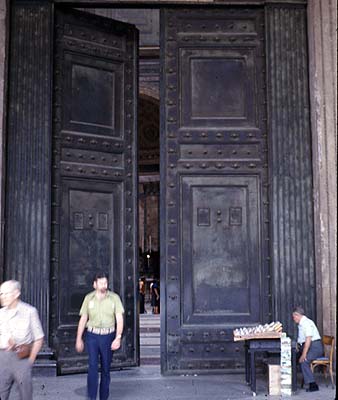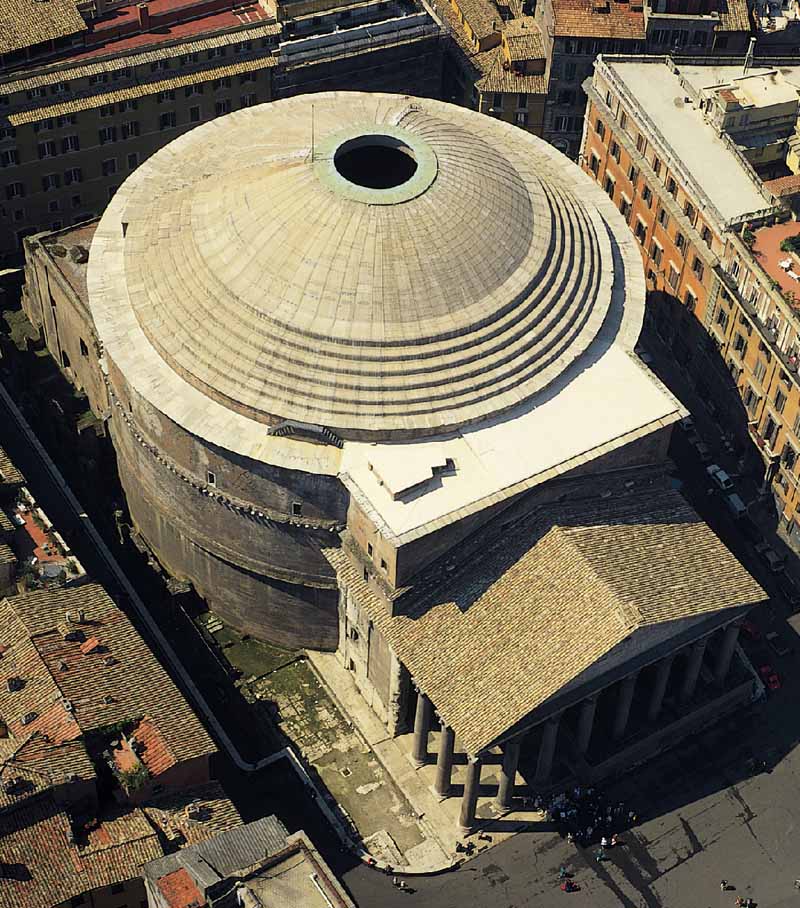The Most Influential Building in Art History
Italy.blogpost4Photo album
I always thought of pagan as a bad word, meaning uncivilized and uncultivated. Perhaps used pejoratively, pagan religion or culture would be something preceding organized religion, be polytheistic and would have left much to be desired.
Later I learned many pagan ethics and morals are rooted in human nature and are quite altruistic.
Pantheon, perhaps was not the name given to it by its makers, is the grandest example of paganism. Built, over an older temple of 27 AD, by Roman Emperor Hadrian from 118-125 AD, this is the only relic of Ancient Rome which still stands intact. However the numbers of dieties worshiped here is reduced to Trinity.
Like many religions who either completely neglected shrines of previous religions or consecrated them as their own, Ancient Christians of Rome were not much different. This is yet another church in the long list of Roman churches. That is the reason it survives intact, much like the Cordoba Mosque; otherwise it would have been neglected or demolished.
Usually the pagan houses of worship are dedicated to one deity, but here is an example of (at least) seven known deities, all being worshiped at the same time, much like Kaaba in pre Islamic Mecca. In fact Kaaba would have existed as a similar house of pantheistic worship as this Pantheon.
In one
way it is the ancient world corollary to the modern interfaith houses of
worship. One could worship any deity of interest, like an equal
opportunity provider.
Inside what you see is the Mother of all domes. It is perhaps the most influential building in art history. Many domes in the later history were inspired by it, including Michelangelo's St Peters Cathedral, Florence Cathedral and even the US Capitol.
It is a big and simple dome, with seven niches in it. the walls of the circular building are tall and then there is a big dome sitting on it. It is the largest structure of reinforced concrete anywhere in the world, built in second century and still stands on its own.
In order to have as less weight as possible, the width of the wall of dome was highest at the bottom, 21 feet and gradually is decreased as it reaches the top, where it is on 3.9 feet. On top there is a big hole, yes it is open.
Eyes to the Heavens
Oculus, The hole on the top of the dome is 9 meters feet wide in diameter. As you enter you see the sunlight beaming in and as the day goes by the beam shifts. Only in the midday it is straight down.
The height of the oculus is equal to the diameter
of the dome's largest circle ie 142 feet. In other words, the whole
building can accommodate a big ball equal to the diameter of its dome's
largest diameter.


Rome officially got Christianized in the fourth century. After the Fall of the Roman Empire much of the Rome was under the indirect rule of Eastern Rome and the Byzantine Emperor gave the building away to the Roman Pope who finally converted Pantheon into a church in 609 in the name of holy martyrs. Remains of martyrs from the catacombs were brought in here and buried near the base of the holy Alter. Rumor is that once the place was bathed for purification, seven winds blew as if the seven pagan gods ran away out of the building.
The importance of the place continued as many notables are buried in it. The fist king of united Italy, Emmanuel, decided to be buried there. He is like the George Washington of USA or Quaid e Azam, M A Jinnah of Pakistan; and here is where he thought he should rest eternally.
The famous painter Raphael, whose work adorn Vatican Museums and is considered second to Michelangelo in his contributions to Vatican wished to be buried here. A few centuries after his death, there was a question whether it was his remains or not; his body was exhumed and reburied after confirmation.
Pope did change the direction of the worship and now the original niche is the main place of worship, adorned by Madonna and Child.
Copper was used much by Ancient Romans, the pagans, and was stolen or 're-cycled' by Medevil Romans, the Christians. The prime example of that is in Pantheon. Its dome was originally covered with copper plates with outside covering of bronze and copper tiles. These tiles were stolen by Constans II in 663 and were on route to Constantinople but re-stolen by Saracens en route. Thousand years down the road Pope Urban VIII needed copper for currency and churches and removed copper plates from the roof, giving him 200 tons of copper sheets and 4 tons of copper nails. Re-cycling, or repossessed from one god for the other.

Out of may copper and bronze from Ancient Rome, only the bronze doors of Pantheon remain unmelted.
Waiting for someone! I hope not.
Next: The Roman Forum. All roads lead to------
--------------------------------------------
Ref:
http://www.copper.org/education/history/60centuries/greece_rome/copperin.html
http://www.findingancientrome.com/PantheonUnexplained.shtml





No comments:
Post a Comment